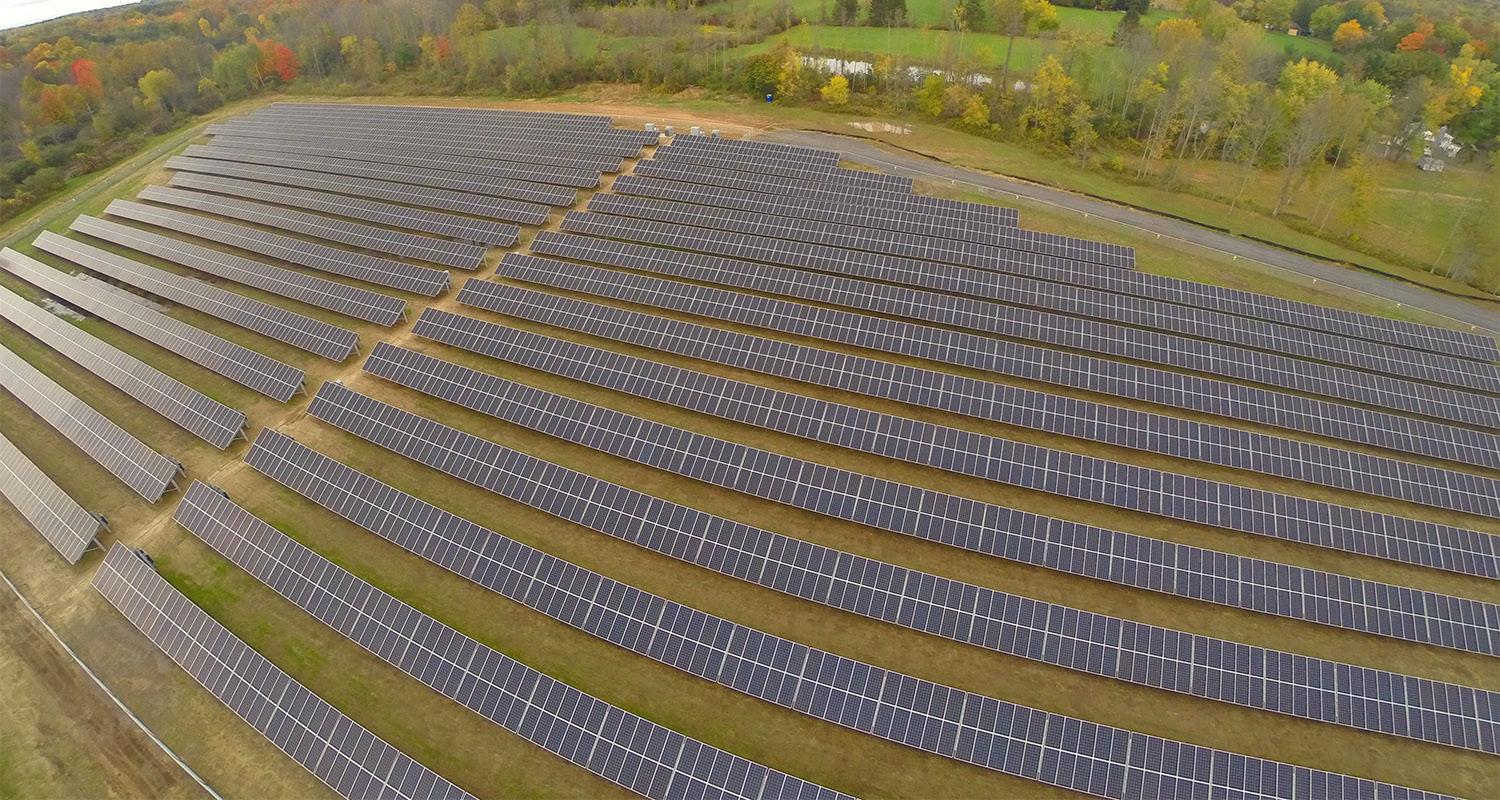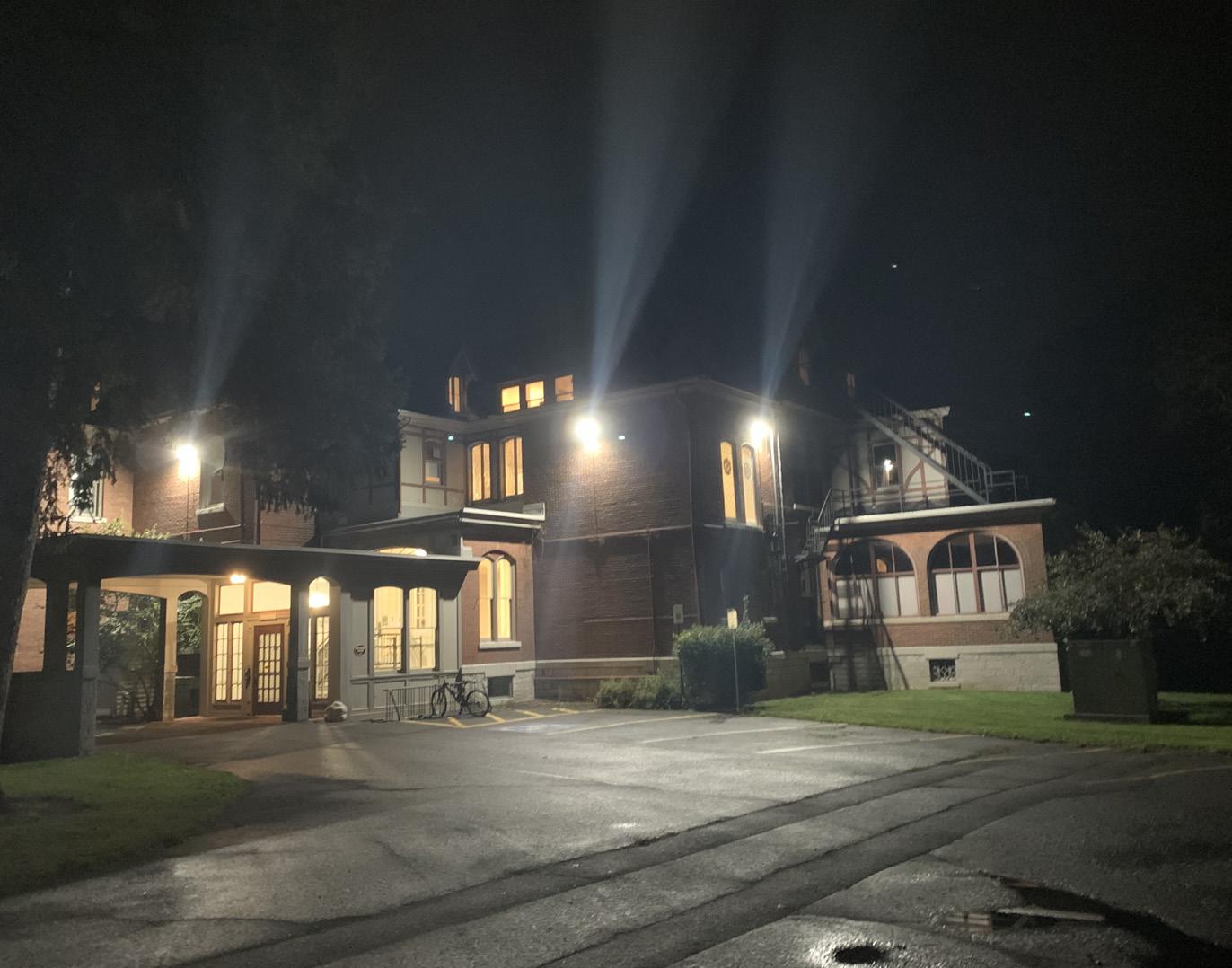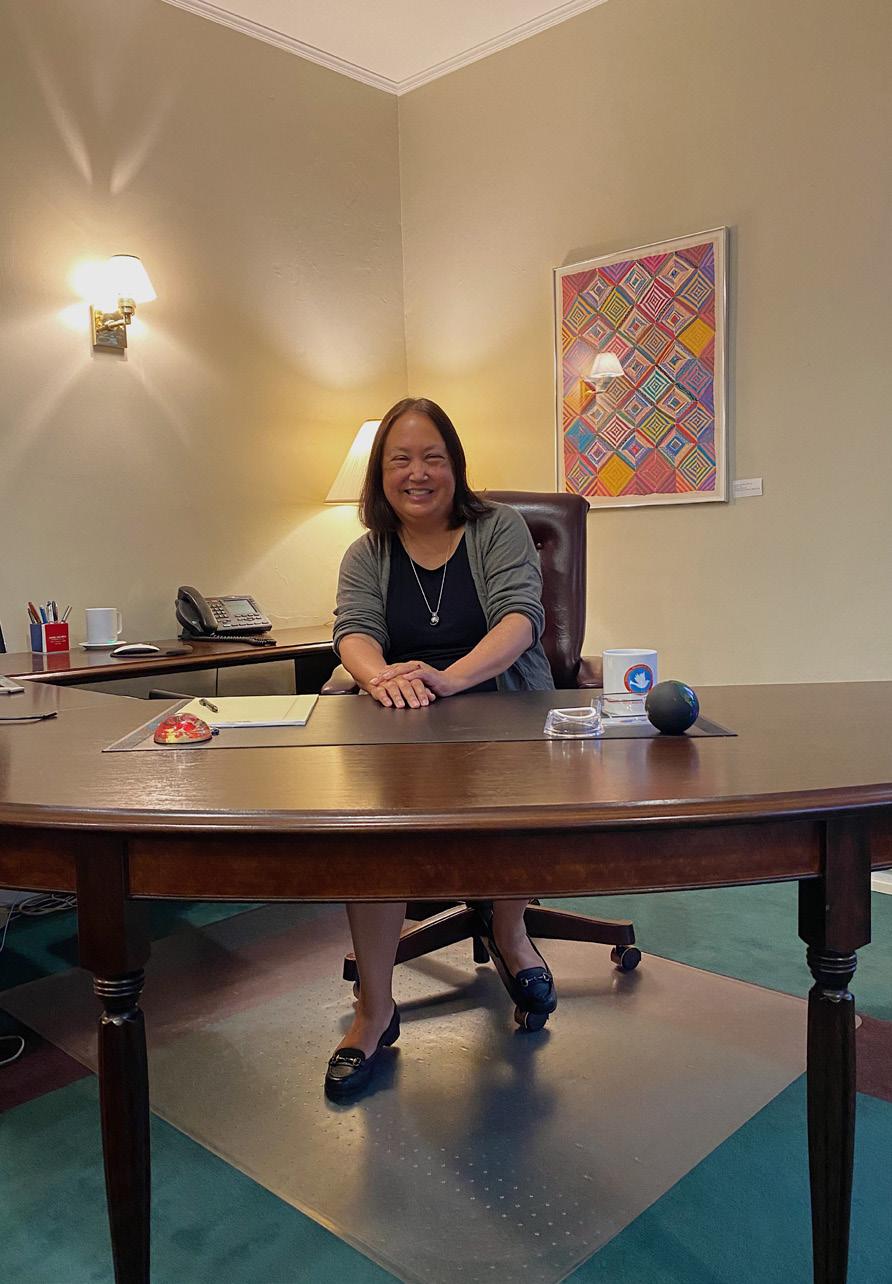
10 minute read
Opinions: Page 10
It’s Time to Divest, HWS
By Mikayla Gullace ‘22 Herald Contributor
Advertisement
The past few months have undeniably shown record effects of climate change, ranging everywhere from some of the most destructive hurricanes in history to rampant forest fires across the globe. These natural disasters tend to impact marginalized groups, specifically people of color, more than any other.
According to many scientific studies, two-thirds of the emitted greenhouse gases triggering these climate change-driven disasters are emitted by only 90 corporations. Out of these 90 corporations, 83 are in the fossil fuel industry (i.e. natural gas, oils, coal, petroleum, tar sands, etc.).
In recent years, HWS has made some substantial strides to become more sustainable, whether it be in expanding our yellow bike system, purchasing more solar panels, or composting our dining hall food waste. These accomplishments are not to be overlooked, as they are a step in the right direction.
However, climate change won’t be mediated by one college making small improvements on its campus. If we want to see tangible change, we need to start questioning our own complacency towards systems that are destructive to the planet. One of the ways many individuals and institutions are working to combat fossil fuel corporations and encourage the development of more sustainable alternatives is by divesting from the fossil fuel industry.
In simple terms, divesting is a way to stand up to major corporations by taking away money (via stocks) that has been invested in those corporations. Specifi-
cally, sustainable divesting involves divesting from businesses that contribute to climate change and have actively funded climate disinformation for decades. By divesting, we are actively showing that we no longer support the idea of profiting from systems that hurt the environment and marginalized groups. If the energy industry doesn’t have an incentive to begin focusing on green energy instead of fossil fuels, they never will. Divesting is a way to show that there will be a cost to not focusing on green energy. This divestment tactic has been proven to be effective. In a 2017 annual report by Shell, Shell admitted that divesting has been seen as a direct reason for fossil fuel companies filing bankruptcies.
Many other universities, and even the entire New York State Pension Fund, have already pledged to divest. These institutions have set great examples for HWS to follow their lead in becoming a part of the state’s larger climate
action project. While their endowments are much larger, HWS still has pull, especially in influencing other liberal arts colleges to follow our lead. While HWS will not disclose the exact stocks and funds that our endowment is invested in, a lack of a divestment declaration strongly suggests that only the worst can be assumed. Sure, HWS has goals to become carbon neutral by 2025. But how can we truly be carbon neutral if we are still profiting off and investing in the fossil fuel industry? Knowing the destructive effects that the fossil fuel industry has had on the environment directly resulting in disproportionately affecting low-income communities and people of color, as well as the consequences future generations will have to face, it becomes clear that we have a moral obligation to divest. How-
Photo Courtesy Office of Communications ever, not only do we have a moral obligation to divest, but we also have a financial one. The fossil fuel industry is on its way out as other in-
stitutions divest and tighter government restrictions are placed on the companies.
For example, Brown University, which has been in the process of divesting over the past decade, had a 12.8% return on endowment after investing more ethically. Meanwhile, in 2019, HWS had a mere 1.14% return on endowment, more than 2% lower than the average return amongst baccalaureate colleges. With those numbers, our return on investments can only improve.
HWS needs to start acknowledging the sixth mass extinction we are heading towards and that we need to do more to combat it, starting off with divestment.
Haughnted Houghton
By Julian Gurman ‘22 Staff Writers
Johnny and Evan were sneaking along the broken-down brick wall, keeping their heads low. As they neared a broken spot on top of the wall, Johnny peaked out over and saw that they were getting close. Starting to loom in the distant darkness was Houghton House, the streetlights illuminating only a small portion of the ominous house. The entire north side was shrouded in darkness and the small parts that were illuminated cast shadows over the areas already dark from the night.
“Are you sure about this?” Evan asked as Johnny started moving forward, passing one of the statues that looked like it seemed to turn with them as they passed by, and Evan was able to look at the house in the distance.
“Of course I am. Come on those are just stories, you don’t actually believe in ghosts, let alone that Houghton is haunted, do you?” Johnny responded without stopping or looking back.
“No of course not,” Evan whispered, lying to himself.
Johnny crossed an open section in the wall, but as Evan got close to it a hand is laid on his shoulder and over his mouth, causing him to jump and squeal––almost yelling, actually.
“Shhhhh you’re gonna wake the ghosts,” the person behind the hands 12said as they let go of Evan.
“What in the wor––oh, hey, Marie, was wondering when you’d show up,” Johnny says as he turned around to find a frightened Evan hyperventilating and a grinning Marie. “Now come on, let’s get a closer look.”
As the trio stealthily moved away from the wall towards the house, a brick fell off the wall causing a small but audible crash.
“What was that?!” asked Evan, turning his head back and forth rapidly.
“Probably a squirrel, come on!” Marie said, giving him a look of encouragement and that smile, that damned smile.
Johnny checked the front door while Evan stayed back, watching the building with a growing sense of dread, as he looked at the upper levels it seemed as if someone was looking out at them while curtains rustled in the wind. Johnny found the front door locked so he began to check windows on the first floor till he found one open on the southern side of the building. He called to Marie and Evan and helped them into the building. Once they had all gotten in, the window behind them slammed shut and a wave of cold immediately ran through them.
“Alright we got in, can we please go now? And who cranked the A/C?” Evan complained.
“No! We only just got here! We gotta snoop around at least a little,” Marie replied, Johnny nodding along with her.
“I’m gonna check down some hallways, there might be haunted classrooms!” Johnny stated before scampering off.
“And I am going to check upstairs, I’ve never been up there before wonder what I’ll find!” Marie added.
Evan tried to voice his concerns about splitting up, but they were gone before
the words had left his brain. As he was left to his own devices, he kept feeling like he was being watched and passed through another cold spot as he started to roam around. Evan inched through the first floor his head on a swivel, arms curled around his torso, frightened. He managed to find himself in the back art gallery, in the near-total darkness the statues and paintings seemed to move and watch him as he walked around. Getting too spooked, he turned to leave before he came face to face with an eerie figure seemingly floating in space, dressed in 19th century garb with strange bruises around its neck area. It made no movements of any kind other than bobbing in the air, but stared through him into his soul. PHOTO BY KYLE MAST ‘24 As he stood there silently petrified, two simultaneous screams rang out through the house shaking him from his stupor. He sprinted through the figure again feeling that frigid cold feeling as he ran into Marie flying down the stairs, toes barely touching the steps almost barreling over him. At the exact same moment, Johnny came around the hallway corner at a million miles an hour, Evan did not even need to say anything as they all sprinted for the door together, banging it open and continuing out into the cold dark night.

New Varisty Sports at HWS
By Jaheim Javel Pierre ‘22 Staff Writers
Upon arrival three years ago, President Joyce Jacobsen was impressed and excited about the activities and athletics programs at the Colleges. Jacobsen told the Herald she “enjoyed the activities fair” and she was “impressed by the level of student creativity that is expressed through the development of the variety of clubs on campus.” According to the president, the administration continues to support the clubs on campus as it is a crucial part of student life on the campus.
As part of the residential college experience, the president reiterated the need of having a wide variety of programs to meets the needs of our diverse college community. Another way the administration has sought to improve the value of student life on campus is by increasing both the number of club sports and varsity sports on campus. This effort was made through complex economic analysis that resulted in the conclusion that the institution will marginally benefit from the additions of these athletic programs.
Many competitor schools have increased their sports programs and it has worked thus far, and in fact, may be attracting students who have HWS as their first choice. The reduction in the number of sports programs offered at HWS was a decision that was made due to budgetary considerations in the 1990s. Women’s volleyball is one of the sports programs that is coming back to HWS, which was in progress before Ja-13cobsen’s arrival. The women’s volleyball program was originally decided to be reintroduced in 2013 and through President Jacobsen’s leadership is finally
PHOTO BY EMMA LUCAS ‘22
going to be implemented in the upcoming school year.
Women’s volleyball is one of the most popular sports on college campuses. Jacobsen thinks it is a major barrier for students who want to come to the colleges but really love the sport which puts them into the unfortunate position of choosing between HWS and a school that allows them to play a sport they love. President Jacobsen also hopes the Colleges increase to a 10:1 faculty-to-student ratio from the current 9:1. Adding the additional athletic programs would allow for the increase without the bureaucratic and cost factors that normally hinder increasing the ratio.
In comparison to schools like Cornell, Duke, Alfred University, and others who required a Covid-19 vaccine prior to enrollment,
HWS was not as early to solidify a mandate. On August 2nd, a memo was sent out to members of the community regarding Covid-19, in that memo the apparent reasoning for a lack of vaccination mandate was “We also acknowledge that whether vaccination is encouraged or required, we will likely never reach a 100% vaccination rate due to medical and religious exemptions, as is the case for other vaccinations such as measles or mumps.” That policy was changed for students on August 23rd, and then for all members of the HWS community on August 30th.
President Jacobsen stated that these changes reflect constant communication with the New York State health authorities and real time New York state requirements and expectations. Additional mandates such as indoor masking reflect the recent Hero Act that Governor Hochul signed, which is true across the board for most schools the President said.
With national Covid-19 rates going down, the president does not see an immediate threat from the virus hindering the activities nor the athletic programs at HWS. She explained that all sports teams have returned, and the fall sports at HWS have returned to playing mostly full season. The winter sports are already scheduled, and the coaches have been able to go out and recruit which are all bullish signs of a return to relative normalcy regarding the athletics programs offered at HWS.
The administration is committed to maintaining all the safety protocols to ensure safety for all members of the community. The president cites the favorable trajectory of the school’s activities and athletics programs amidst Covid-19 because the administration learned how to manage Covid-19 last spring. Despite the lack of vaccines, the spring season was successfully completed by following set protocols. “One of the major lessons that was learned from Covid-19,” said President Jacobsen, “was the importance of working with other schools from the area.”








